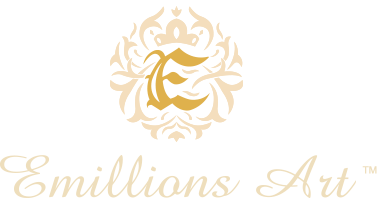An “appraisal report” is a formal, systematic, and comprehensive document produced by a qualified appraiser that provides a detailed assessment and valuation of an artwork or collection of artworks. The purpose of an appraisal report is to determine the economic or market value of the art for various purposes, such as insurance, taxation, estate planning, purchase or sale negotiations, and investment decisions. It is a crucial tool for individuals, institutions, and organizations that own or manage fine art assets.
Key elements and concepts associated with an appraisal report in the academic context include:
Appraiser Qualification: An appraisal report is typically prepared by a certified and qualified appraiser who has expertise in the specific type of art being evaluated. Appraisers are often members of recognized professional organizations and adhere to ethical and professional standards.
Purpose of the Appraisal: The report begins by clearly stating the purpose of the appraisal, whether it is for insurance coverage, estate planning, donation, litigation, or other specific reasons. The purpose guides the approach and methodologies used in the appraisal.
Description of the Artwork: An appraisal report includes a detailed artwork description, including its physical characteristics, dimensions, medium, artist attribution, and unique features. Photographs and images may also be included.
Market Analysis: The appraiser analyzes the current state-of-the-art market relevant to the appraised artwork. This includes recent sales data, trends, and market conditions.
Comparable Sales: Comparative analysis examines recent sales of similar artworks by the same artist or from the same art movement or genre. These sales serve as benchmarks for estimating the value of the subject artwork.
Artist Attribution: The appraiser’s expertise is critical in evaluating the artist’s reputation, significance, and market demand. Renowned artists often command higher prices and an accurate attribution is essential.
Provenance and History: The appraisal report examines the artwork’s provenance, exhibition history, ownership records, and any historical documentation that may be relevant. A strong, well-documented provenance can positively affect an artwork’s value.
Condition Assessment: The physical condition of the artwork is carefully evaluated. Any damage, restoration, or alterations are considered, as they can significantly impact value.
Technical Analysis: Scientific and technical methods may be employed, such as pigment analysis, radiography, and UV examination, to uncover hidden details, authenticate the artwork, and assess its condition.
Legal and Ethical Considerations: Appraisal reports adhere to legal and ethical standards, such as those outlined in the Uniform Standards of Professional Appraisal Practice (USPAP) in the United States, to ensure objectivity, transparency, and professional conduct in the appraisal process.
Valuation Methods: The appraiser employs one or more recognized methodologies for estimating the artwork’s value, such as the market data approach, the cost approach, or the income approach, depending on the specific appraisal context.
Valuation Conclusion: The report concludes with a final estimated value for the artwork and a clear explanation of the methodologies used and the reasoning behind the valuation.
An appraisal report is a scholarly and professional document that aims to provide an objective, well-informed, and defensible estimate of an artwork’s worth. It is an essential tool for art owners, collectors, institutions, and legal authorities to make informed decisions regarding art assets, ensuring the integrity and accountability of the art market.



